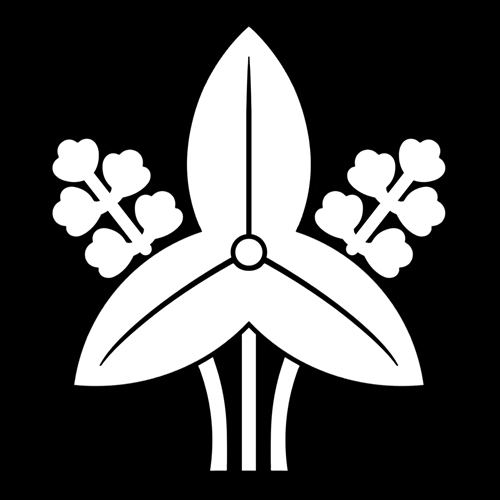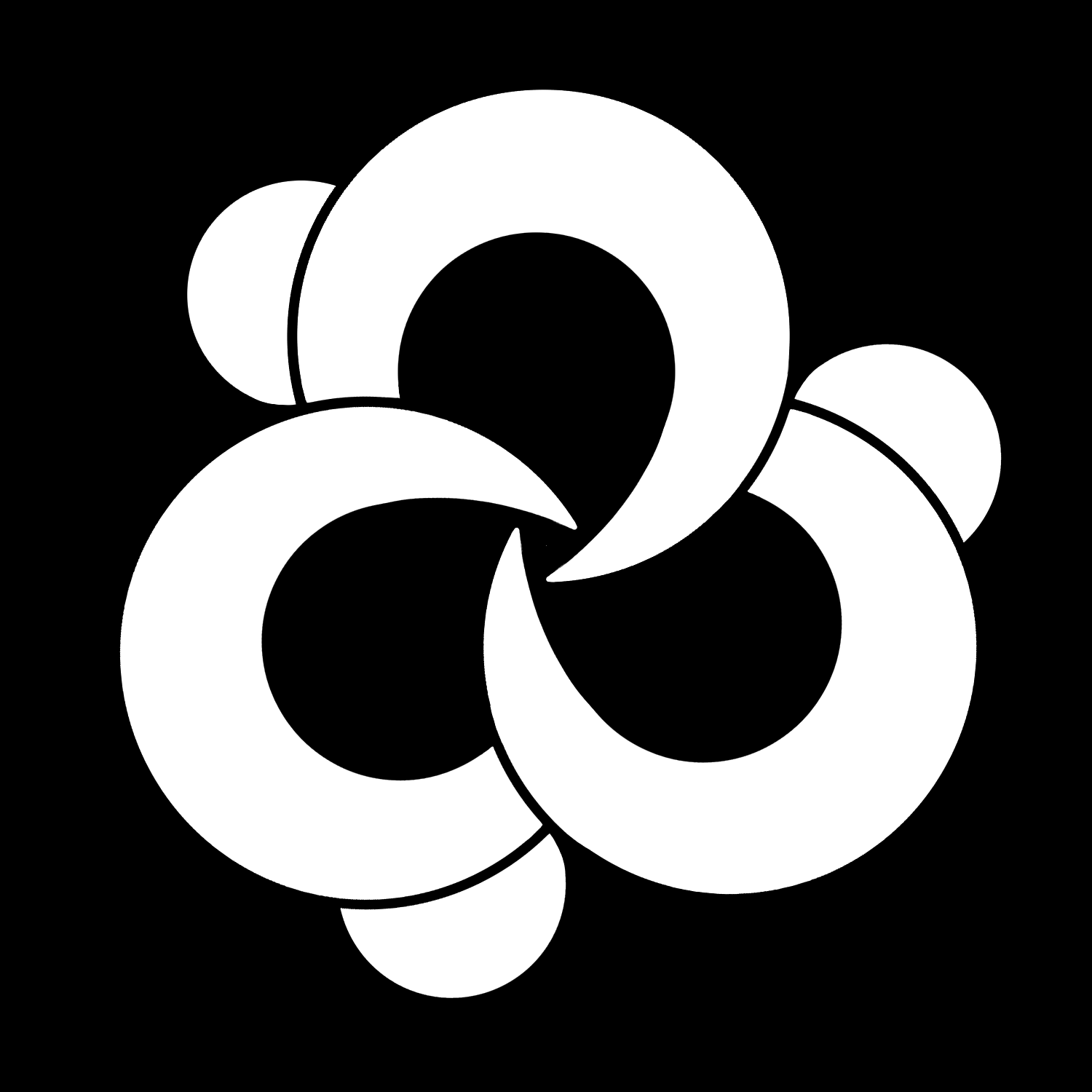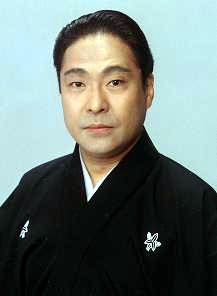1. Biography and Background
This section covers Ichikawa En'ō II's personal history, including his birth, family relations, educational background, and the early challenges that influenced his career.
1.1. Birth and Early Life
Masahiko Kinoshi was born on December 9, 1939, in Tokyo, Japan. He was the eldest son of Sandaime Ichikawa Danshirō and the actress Sanae Takasugi. His family also included a sister, Ichikawa Yasuko, and a brother, Yondaime Ichikawa Danshirō.
He made his stage debut at the age of eight, in January 1947, at the Tokyo Gekijo, where he performed as `Attached Chitoshi` in the play `Futari Sanbasō`. On this occasion, he formally assumed his first stage name, 三代目市川團子Ichikawa Danko IIIJapanese. During his teenage years as Ichikawa Danko, he was part of a popular trio known as "Teenage Kabuki," alongside Rokudaime Ichikawa Somegorō (who later became Nidaime Matsumoto Hakuō) and Nakamura Mannosuke (who later became Nidaime Nakamura Kichiemon).
1.2. Education
Ichikawa En'ō II received a comprehensive education in Tokyo. He attended Chiyoda Ward Bancho Elementary School before progressing to Keio Junior High School and Keio Senior High School. He furthered his academic pursuits at Keio University, graduating in 1962 from the Faculty of Letters with a degree in Japanese literature.
1.3. Succession and Early Career
In May 1963, at the age of 24, Masahiko Kinoshi formally succeeded to the name 三代目市川猿之助Ichikawa Ennosuke IIIJapanese at the Kabuki-za theater. For this occasion, he performed the role of `Tadanobu` in the "Yoshino Yama" scene of `Yoshitsune Senbon Zakura` and the `Kijo` in `Kurozuka`.
Tragically, soon after his succession, he faced profound personal losses. His grandfather, Shodai Ichikawa En'ō (who was also Nidaime Ichikawa Ennosuke), died in June 1963, followed by his father, Sandaime Ichikawa Danshirō, in November of the same year. These successive deaths left him without significant backing in the kabuki world, leading him to be described as an "orphan of the Kabuki world" (梨園の孤児Rien no KojiJapanese). Despite this adversity, he resolutely refused to accept patronage from other prominent kabuki families, choosing instead to forge his own path, driven by the innovative artistic vision inherited from his grandfather and integrating traditional `keren` elements from Kansai Kabuki.
His house name, or `yagō`, was Omotoya (澤瀉屋Japanese), and his `jōmon` (formal crest) was the Omotodaka (澤瀉Japanese). His `kaemon` (substitute crest) was the Mitsu Zaru (三つ猿Japanese).


2. Kabuki Career and Artistic Innovations
Ichikawa En'ō II's career was defined by his audacious artistic choices and his significant impact on the evolution of kabuki, through innovation, the creation of new forms, and the revival of traditional plays.
2.1. Keren and Chūnori Innovations
Ichikawa En'ō II was a pivotal figure in the revival and popularization of `keren` (stage tricks) in kabuki, a theatrical element often frowned upon by traditionalists after the Meiji Restoration's theater reform movement. He was widely recognized as the "king of `chūnori`" (flying over the audience), a spectacular aerial technique. He pioneered the use of these dramatic effects, which included elaborate costumes and flamboyant stage designs.
His first `chūnori` performance took place in 1968, in the "Yonokiri" scene of `Yoshitsune Senbon Zakura`, where he played the role of the fox. By 2000, he had performed `chūnori` over 5,000 times, notably as Guan Yu, a feat that earned him a Guinness World Record.
Initially, his emphasis on `keren` attracted strong criticism from conservative kabuki connoisseurs and critics, who deemed it "playing to the gallery" and a distraction from the "true dramatic art." Nidaime Onoe Shōroku, a prominent figure and brother of Jūichidaime Ichikawa Danjūrō, famously derided Ennosuke's innovative style as the "Kinoshi Circus," a sarcastic jab referencing his birth name, Kinoshi, and the well-known Kinoshita Circus. This period was particularly challenging for Ennosuke, who, having lost both his grandfather and father, lacked strong patronage in the kabuki world.
However, Ennosuke ultimately overcame these criticisms. The `chūnori` technique, which he had originally learned from Sandaime Jitsukawa Enjaku, gained widespread acceptance and was later adopted by many other leading kabuki actors, including Nidaime Onoe Kikugorō, Jūichidaime Ichikawa Danjūrō, Kudaime Matsumoto Kōshirō, and Jūhachidaime Nakamura Kanzaburō. In a notable innovation, in 1984, he performed Japan's first diagonal `chūnori` over the audience seats during a performance of `Tōseiryū Oguri Hangan` at the Chunichi Theatre. His spectacular and entertainment-rich productions garnered immense public support, significantly contributing to the expansion of kabuki's popular appeal.

2.2. Creation of Super Kabuki
In 1986, Ichikawa En'ō II spearheaded the creation of "Super Kabuki" (スーパー歌舞伎Sūpā KabukiJapanese), an innovative genre designed to breathe new life into modern kabuki, which had largely evolved into a classical art form. His first `Super Kabuki` production was `Yamato Takeru`, for which he commissioned the renowned philosopher Takeshi Umehara to write the script. This groundbreaking work premiered at the Shinbashi Enbujō. `Super Kabuki` was characterized by its grand scale, spectacular stage effects, and contemporary themes, aiming to attract new audiences and infuse the traditional art form with renewed vitality. Following his later health decline, the legacy of `Super Kabuki` was carried on primarily by his disciples from the Omotoya lineage, including Sandaime Ichikawa Udanji, Nidaime Ichikawa Emiya, and Nidaime Ichikawa Haru'en.
2.3. Revival of Traditional Plays
Beyond creating new forms, Ichikawa En'ō II dedicated significant efforts to reviving and reinterpreting forgotten traditional kabuki plays. One notable example is `Date no Jūyaku` (伊達の十役Date no JūyakuJapanese, The Ten Roles of Date), a complex piece where he masterfully performed ten different roles within a single performance through the innovative use of `hayagawari` (quick costume changes). In 2010, he compiled his extensive repertoire of representative works into `Sarunosuke Jūhachiban` (猿之助十八番Sarunosuke JūhachibanJapanese, Eighteen Best Plays of Ennosuke), which was later expanded to `Sarunosuke Shijūhachi Sen` (猿之助四十八撰Sarunosuke Shijūhachi SenJapanese, Forty-Eight Selections of Ennosuke), further solidifying his legacy in the classical kabuki tradition.
2.4. Directing Other Art Forms
Ichikawa En'ō II's artistic reach extended beyond kabuki into the realm of Western opera, where he demonstrated his versatility as a director. In 1992, he directed Richard Strauss's `Die Frau ohne Schatten` (The Woman Without a Shadow) for the Bavarian State Opera's Japan tour, with the production subsequently premiering at their home theater the following year. He also took on the directorial role for Nikolai Rimsky-Korsakov's opera `The Golden Cockerel` in 2002, showcasing his ability to apply his theatrical vision to diverse artistic mediums.
3. Personal Life and Relationships
This section delves into Ichikawa En'ō II's personal life, including his marriages and his complex relationship with his son.
3.1. Marriages and Family
Ichikawa En'ō II was married twice. His first marriage was in 1965 to Hamako Yuumi, an actress and former top `musumeyaku` (female role specialist) of the Takarazuka Revue's Snow Troupe. Their son, Teruyuki Kagawa, who would later become Ichikawa Chūsha IX, was born in December 1965. However, their marriage was short-lived, with the couple separating after approximately one and a half years and formally divorcing in 1968. Teruyuki Kagawa was subsequently raised by his mother.
The dissolution of his first marriage was attributed to an affair with Fujima Murasaki, an actress and a `natori` (certified master) of the Fujima-ryū school of Japanese dance. Fujima Murasaki, who was 16 years older than En'ō, was married with children, and her husband, Fujima Kanjūrō VI (Nisei Fujima Kanzō), was also En'ō's dance teacher. Despite these complicated circumstances, their mutual affection persisted. After leaving his family, En'ō began cohabiting with Fujima Murasaki. This period of cohabitation lasted an extraordinary 35 years. Fujima Murasaki's divorce was finalized in 1985, and she and En'ō formally married on February 28, 2000. However, their later years together were marked by hardship, as En'ō suffered a stroke in 2003, and Fujima Murasaki passed away from liver failure on March 27, 2009.
3.2. Relationship with Teruyuki Kagawa
Ichikawa En'ō II had a complex and initially strained relationship with his son, Teruyuki Kagawa (who later adopted the kabuki stage name Ichikawa Chūsha IX). After graduating from university, Teruyuki Kagawa debuted as an actor in 1989. That winter, at the age of 25, he decided to visit his father during a performance. En'ō reportedly rebuked him, saying, "To suddenly visit before an important performance shows a lack of consideration as an actor." He further stated, "I was reborn the moment I broke with my family. Therefore, my current self and you have no connection. You are not my son. Consequently, I am not your father," effectively rejecting Kagawa completely.
The underlying intention behind this seemingly harsh statement was later clarified by En'ō himself in a 2013 NHK Special television program. He explained that he wanted his son to cultivate an independent and self-reliant spirit as an actor, capable of enduring hardships alone, mirroring his own struggles. He believed that for Kagawa to truly pursue the path of an actor, he should not rely on the identity of being his father's son.
The reconciliation between father and son was largely facilitated by Fujima Murasaki's efforts. Teruyuki Kagawa attended Murasaki's funeral as a family member in 2009. During the September 2011 press conference announcing his nephew's succession to Ichikawa Ennosuke IV, his own succession to Ichikawa En'ō II, and Teruyuki Kagawa's and his son Masaaki's entry into the kabuki world, En'ō tearfully expressed gratitude to his first wife, Hamako Yuumi, stating, "Hamako-san, thank you. Thank you beyond the bitterness." Hamako Yuumi and En'ō also had their first conversation in approximately 45 years during the rehearsals for Kagawa's kabuki debut.
Following Fujima Murasaki's death, a former staff member from the Hakataza theater reportedly began assisting En'ō with his personal care and family affairs. While reports initially indicated a period of cohabitation involving En'ō, his son, and grandson, he later moved to an apartment near Kagawa's residence, where Kagawa would visit him for rehearsals.
4. Later Life, Retirement, and Death
This section details the concluding chapter of Ichikawa En'ō II's life, marked by health challenges, his formal retirement from the stage, and his passing.
4.1. Health Issues and Decline in Activity
On November 17, 2003, while performing and directing his play `Empress Dowager Cixi` at the Hakataza theater, Ichikawa En'ō II experienced a sudden health crisis and had to withdraw from the performance. Initially, the diagnosis was publicly announced as an "early cerebral infarction" (stroke). However, it was later confirmed that he had actually developed Parkinson's syndrome. This health setback significantly reduced his opportunities to perform on stage. Despite this, he continued to remain active in the kabuki world, focusing his efforts on directing `Super Kabuki` productions and his revived traditional plays. In September 2011, he made a public appearance for the first time in eight years, alongside his son Teruyuki Kagawa, to announce his nephew's succession to the Ichikawa Ennosuke name.
4.2. Retirement and Succession of Name
In June 2012, at the June Grand Kabuki performance held at Shinbashi Enbujō, Ichikawa En'ō II formally retired from his active stage name. He passed on the esteemed Ichikawa Ennosuke name to his nephew, Ichikawa Kamejiro II, who then became Ichikawa Ennosuke IV. Simultaneously, Ichikawa En'ō II himself adopted the retirement name 二代目 市川 猿翁Ichikawa En'ō IIJapanese. This name, `En'ō`, had previously been used by his grandfather, Ichikawa En'ō I, underscoring a lineage and tradition.
4.3. Final Appearances and Death
Ichikawa En'ō II's final stage appearance took place in December 2013, during the "Nidaime Ichikawa En'ō, Yondaime Ichikawa Ennosuke, Kudaime Ichikawa Chusha Succession Performance `Kōjō`" at the Kyoto Minamiza theater. Despite his declining health, he also made a notable appearance during the curtain call of a Chunichi Theatre performance in February 2018, receiving a warm welcome from the audience.
Ichikawa En'ō II died in Tokyo on September 13, 2023, at the age of 83. The official cause of death was arrhythmia. Following his passing, he was posthumously conferred the `Junior Fourth Rank` (従四位Jū-shiiJapanese) and awarded the `Order of the Rising Sun, Gold Rays with Neck Ribbon` (旭日中綬章Kyokujitsu ChūjushōJapanese), recognizing his profound contributions to Japanese culture.
5. Legacy and Assessment
Ichikawa En'ō II left an indelible mark on the world of kabuki, widely celebrated for his innovative spirit and enduring impact.
5.1. Achievements and Positive Impact
Ichikawa En'ō II's career is marked by a pioneering spirit that created a unique niche within stage arts through his energetic and diverse activities. He successfully revitalized and reinvented classical kabuki while simultaneously forging entirely new theatrical forms. He is widely credited for popularizing `keren` techniques, particularly the spectacular `chūnori`, which he performed over 5,000 times, a feat recognized by Guinness World Records.
Despite initial resistance and criticism from traditionalists who dismissed his innovations as mere spectacle, he steadfastly pursued his vision. His "entertainment-rich" and visually stunning productions garnered widespread public support, ultimately leading to the acceptance of his innovations within mainstream kabuki. His creation of `Super Kabuki` profoundly expanded kabuki's popular appeal, drawing new audiences and modernizing the art form. His persistent efforts in reviving forgotten plays and reinterpreting classics also ensured the continuity and evolution of kabuki's rich heritage. His legacy is one of a true innovator who broadened the boundaries of a traditional art, making it more accessible and vibrant for future generations.
5.2. Criticisms and Controversies
During the early phases of his career, Ichikawa En'ō II, then Ichikawa Ennosuke III, faced significant criticism from staunch traditionalists within the kabuki community and among theater critics. His fervent embrace of `keren` (stage tricks) and other theatrical flourishes was often derided as `playing to the gallery` and seen as a departure from the "true dramatic art" of kabuki.
A particularly notable instance of this criticism came from Nidaime Onoe Shōroku, a highly influential figure and brother of the head of the Ichikawa family, Jūichidaime Ichikawa Danjūrō. Shōroku famously disparaged Ennosuke's innovative style by labeling it the "Kinoshi Circus," a sarcastic play on Ennosuke's birth name, Kinoshi, and the well-known Kinoshita Circus. This pejorative term implied that Ennosuke's performances were mere spectacle, lacking artistic depth. At this time, having recently lost both his grandfather and father, Ennosuke was largely isolated within the kabuki world without a strong patron, making these criticisms particularly challenging. However, he persevered, and his innovative approach ultimately gained widespread public support, enabling him to overcome these initial controversies and establish his unique theatrical style.
5.3. Awards and Honors
Ichikawa En'ō II received extensive recognition and numerous accolades throughout his distinguished career, reflecting his profound impact on the performing arts. His awards and honors include:
- Theatron Award (1965)
- Nagoya Pen Club Award (1969)
- Arts Encouragement Prize for New Artists (1976)
- Matsuo Performing Arts Award of Excellence (1980)
- Bologna City Cultural Merit Award (1981)
- Mainichi Art Award (1984)
- Japan Culture Design Award (1985)
- Officier de l'Ordre des Arts et des Lettres (Officer of the Order of Arts and Letters), a French honor (1987)
- Tokyo Metropolitan Cultural Honor (1988)
- Arts Encouragement Prize by the Minister of Education (1990)
- Yomiuri Theater Award for Outstanding Actor (1996)
- Kikuchi Kan Award (1996)
- Medal with Purple Ribbon (2000)
- Person of Cultural Merit (2010)
- Montblanc de la Culture Arts Patronage Award (2013)
- Posthumously, he was conferred the `Junior Fourth Rank` (従四位Jū-shiiJapanese) and awarded the `Order of the Rising Sun, Gold Rays with Neck Ribbon` (旭日中綬章Kyokujitsu ChūjushōJapanese) in 2023.
6. Works
Ichikawa En'ō II's artistic output spanned various media, from his iconic stage performances to appearances in film and television, and his insightful writings on kabuki.
6.1. Major Stage Performances
His `atariyakus`, or representative works and roles, were central to his legacy:
- The fox in the "Yonokiri" scene of `Yoshitsune Senbon Zakura`
- The ten roles in `Zankōyō Aogao Mise`, also known as `Date no Jūyaku`, where he utilized `hayagawari` to perform all parts
- The titular role in `Super Kabuki Yamato Takeru`
- The role of Oguri Hangan in `Super Kabuki Oguri`
6.2. Appearances in Other Media
Beyond the kabuki stage, Ichikawa En'ō II also appeared in films and television productions.
- Films:
- `Ōchūshingura` (1957), as Ōishi Chikara
- `Narayama Bushikō` (1958), as Kesakichi
- `Ōsaka-jō Monogatari` (1961), as Kirigakure Saizō
- `Chūshingura: Hana no Maki, Yuki no Maki` (1962), as Ōishi Chikara
- Television Dramas:
- `Wakaki hi no Nobunaga` (1964), part of the `Shionogi Television Theater` series on Fuji Television
- Other Appearances:
- He served as the general host for the 1984-1985 New Year's Eve broadcast of `Yuku Toshi Kuru Toshi` by TV Tokyo.
6.3. Writings and Publications
Ichikawa En'ō II authored several books, offering insights into his artistic philosophy and the world of kabuki:
- `Enja no Me` (The Performer's Eye) (1976, Asahi Shimbun Publications)
- `Ennosuke Shurabutai - Mirai wa Kyō ni Ari` (Ennosuke's Shura Stage - The Future Is Today) (1984, Yamato Yama Shuppansha; reissued as PHP Bunko, 1994)
- `Ennosuke no Kabuki Kōza` (Ennosuke's Kabuki Lecture) (1984, Shinchosha, "Tombo no Hon" series)
- `Ichikawa Ennosuke Kabuki no Jikū` (Ichikawa Ennosuke's Kabuki's Space-Time) (1986, PARCO Publishing; a new edition titled `Ichikawa Ennosuke` was published by Kodansha in 1993)
- `Yumemiru Chikara Super Kabuki to iu Mirai` (The Power to Dream: Super Kabuki as the Future) (2001, Shunjusha), co-authored with Ken'suke Yokouchi
- `Super Kabuki Monozukuri Nōto` (Super Kabuki Production Notes) (2003, Shueisha Shinsho)
- His column "My Resume" was serialized in the morning edition of the Nihon Keizai Shimbun from February 1 to February 28, 2014.
Additionally, his work and life were the subject of several biographical publications:
- `Ichikawa Ennosuke no Shigoto` (The Work of Ichikawa Ennosuke) (1995, Engeki Shuppansha)
- Tadakatsu Mitsumori's `Ichikawa Ennosuke Katamuki Ichidai` (Ichikawa Ennosuke: A Maverick's Life) (2010, Shinchosha)
6.4. Other Activities
Ichikawa En'ō II also served as Vice President of Kyoto University of Art and Design (now Kyoto University of the Arts), and as the artistic director of the Shunjuza theater within the university until his health declined. During his time as Sandaime Ichikawa Ennosuke, he also produced the restaurant chain `Umaya`.